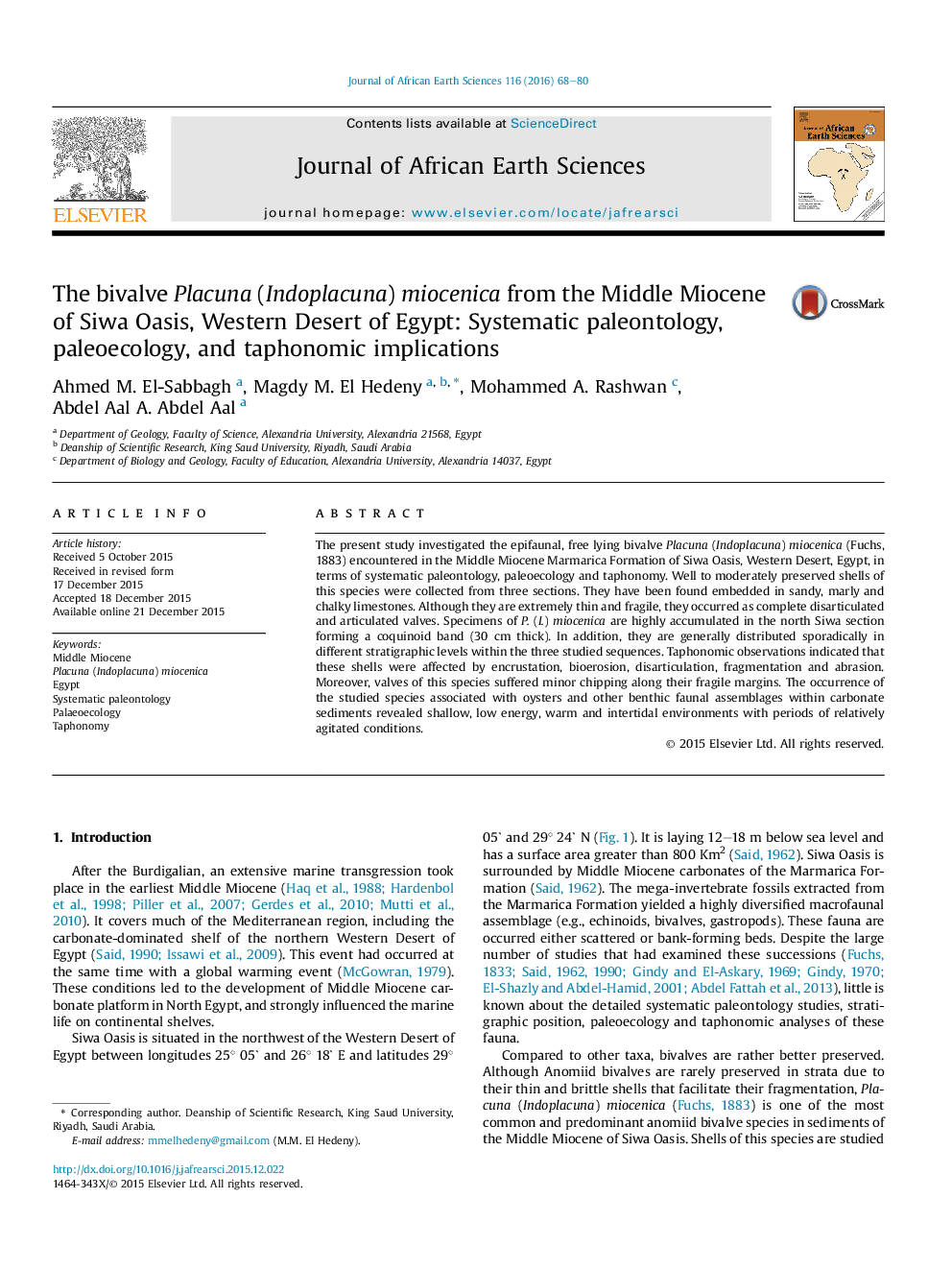| کد مقاله | کد نشریه | سال انتشار | مقاله انگلیسی | نسخه تمام متن |
|---|---|---|---|---|
| 4728290 | 1640192 | 2016 | 13 صفحه PDF | دانلود رایگان |

• The bivalve Palcuna (Indoplacuna) miocenica is accumulated in the Marmarica Formation.
• They occurred as a parauthochtonous and autochtonous shell materials.
• Their shells exhibit several kinds of pre- and post-mortem taphonomic features.
• The species prefers shallow, warm intertidal marine water.
• It deposited in a low energy with periods of relatively agitated conditions.
The present study investigated the epifaunal, free lying bivalve Placuna (Indoplacuna) miocenica (Fuchs, 1883) encountered in the Middle Miocene Marmarica Formation of Siwa Oasis, Western Desert, Egypt, in terms of systematic paleontology, paleoecology and taphonomy. Well to moderately preserved shells of this species were collected from three sections. They have been found embedded in sandy, marly and chalky limestones. Although they are extremely thin and fragile, they occurred as complete disarticulated and articulated valves. Specimens of P. (I.) miocenica are highly accumulated in the north Siwa section forming a coquinoid band (30 cm thick). In addition, they are generally distributed sporadically in different stratigraphic levels within the three studied sequences. Taphonomic observations indicated that these shells were affected by encrustation, bioerosion, disarticulation, fragmentation and abrasion. Moreover, valves of this species suffered minor chipping along their fragile margins. The occurrence of the studied species associated with oysters and other benthic faunal assemblages within carbonate sediments revealed shallow, low energy, warm and intertidal environments with periods of relatively agitated conditions.
Journal: Journal of African Earth Sciences - Volume 116, April 2016, Pages 68–80